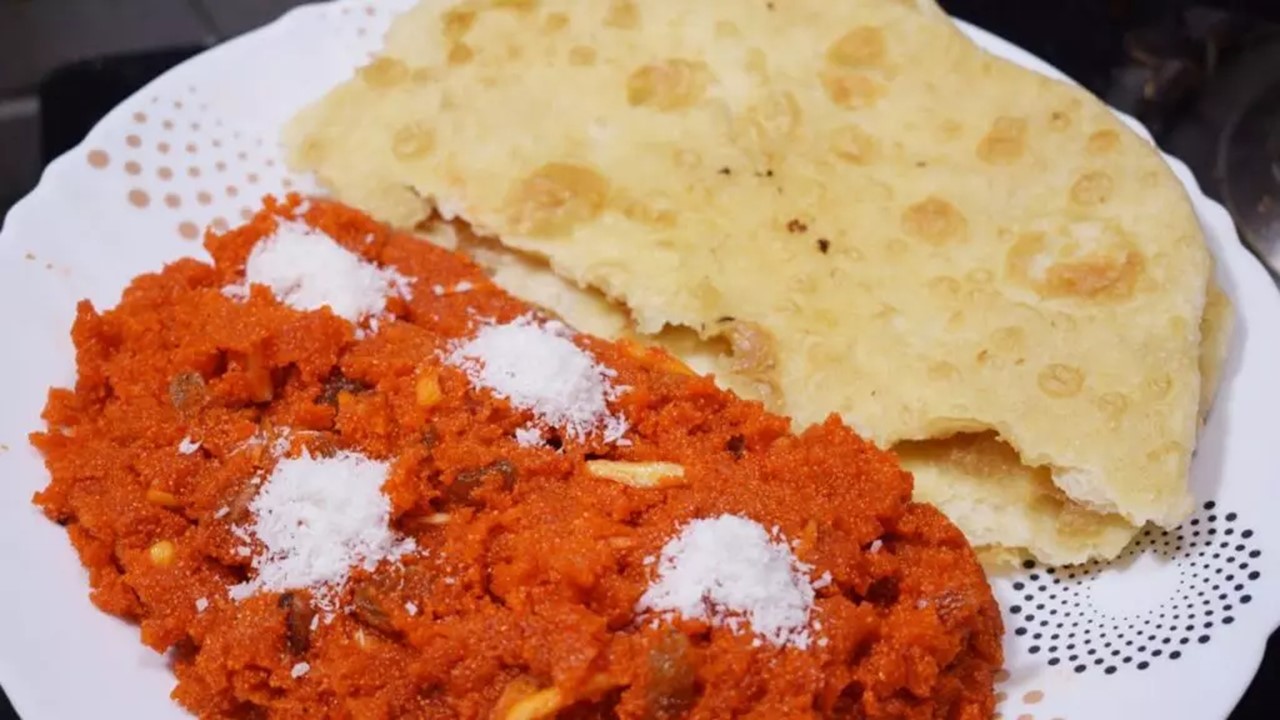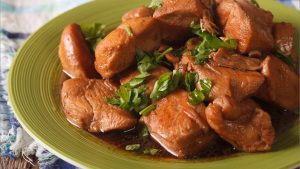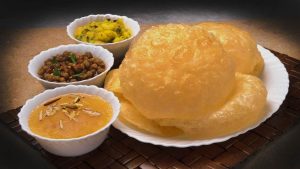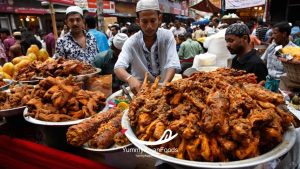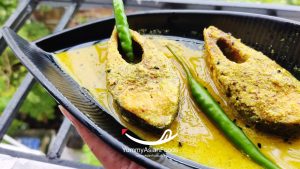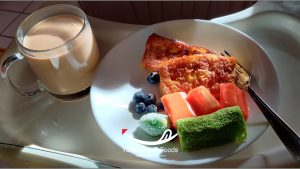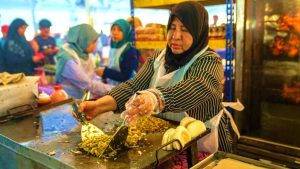Table of Contents
ToggleImagine waking up to the delightful aroma of warm, flaky parathas filled with a sweet and fragrant halwa filling. A tantalizing fusion of flavors and textures awaits as you embark on a culinary journey through the vibrant streets of Lahore or Karachi. Pakistani Halwa Paratha, a beloved delicacy, seamlessly blends the richness of halwa with the comforting warmth of freshly cooked parathas. In just four easy steps, you can recreate this iconic dish in your own kitchen, bringing a piece of Pakistani culture and tradition to your dining table. Let’s unravel the secrets behind mastering this delectable treat that is sure to captivate your taste buds and transport you to the bustling bazaars in Pakistan.
Ingredients Needed for the Recipe of Halwa Paratha
The secret to making the perfect Pakistani Halwa Paratha lies in its unique combination of ingredients that blend together to create a harmonious symphony of flavors. To start off, you will need fine semolina (suji) which forms the base of the halwa filling, lending it a rich, nutty texture. Adding sugar and ghee to the mix enhances the sweetness and richness of the halwa, creating a luxurious filling for your paratha.
Next up, be sure to have a medley of aromatic spices on hand, such as cardamom and cloves. These spices infuse warmth and depth into the halwa mixture, elevating its taste profile and adding layers of complexity. Finally, don’t forget to include chopped nuts, like almonds or pistachios, for that satisfying crunch that contrasts beautifully with the softness of the halwa. Together, these ingredients work in harmony to create a culinary masterpiece that is both comforting and indulgent—a true delight for your taste buds.
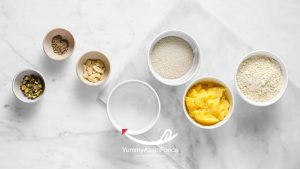
How to Cook Pakistani Halwa Paratha
As you prepare the dough, make sure to incorporate just the right amount of ghee for that authentic flavor and texture; too much can result in a greasy paratha, while too little might affect the softness of the bread. The key to achieving a perfect balance lies in kneading the dough with patience and precision. Once your dough is ready, divide it into equal portions; this ensures uniform thickness when rolling out each paratha.
When filling the parathas with halwa, be generous but mindful not to overfill them, as this could lead to leaking while cooking. Spread a thin layer of halwa on one side of the rolled-out dough before folding it over carefully. Seal the edges securely—this step is crucial for preventing any precious filling from escaping during cooking and guarantees an enjoyable eating experience with every bite.
Cooking Pakistani halwa parathas requires finesse and timing; ensure that your skillet or griddle is heated adequately before placing each paratha on it. Cook them until they achieve a golden-brown color on both sides, flipping them occasionally for even cooking. Serve hot off the stove with a dollop of butter or yogurt for an irresistible blend of flavors that will leave your taste buds craving more.
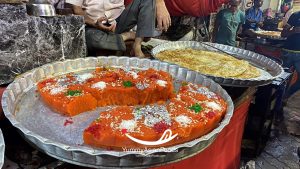
Here are 4 easy steps to cook Pakistani halwa paratha
Step 1: Making the dough
As you embark on the culinary journey of making Pakistani Halwa Paratha, the first step is arguably the most crucial: making the dough. This process sets the foundation for a perfect balance of softness and crispiness in the final product. Remember, while adding water to your flour, do so gradually. The goal is to achieve a pliable dough that is not too dry or too sticky.
Many seasoned chefs recommend using warm water when preparing the dough as it helps activate the gluten in the flour and results in a more elastic texture. Additionally, incorporating a pinch of salt at this stage can enhance the overall flavor profile of your Halwa Paratha. The key here is patience; knead the dough thoroughly until it reaches a smooth consistency, allowing all ingredients to meld together seamlessly.
By paying attention to this initial step and mastering the art of creating an impeccable dough foundation for your Halwa Paratha, you are setting yourself up for success as you proceed with further stages in this delightful cooking endeavor. The joy lies not just in achieving a delectable end product but also in immersing yourself fully into each stage of preparation, honing your skills, and relishing the process itself.
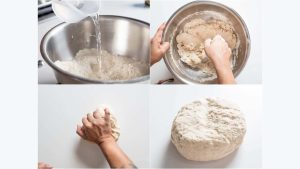
Step 2: Preparing the halwa filling
As we delve into the art of making Pakistani Halwa Paratha, preparing the flavorful halwa filling is a crucial step in creating this delectable dish. To begin, heat a generous amount of ghee in a pan and add semolina, allowing it to roast until aromatic. Next, incorporate sugar, finely chopped nuts such as almonds and pistachios, and fragrant cardamom powder for that irresistible taste and texture.
What sets apart a good halwa filling is the combination of ingredients used. Consider adding raisins or shredded coconut for an added layer of sweetness and complexity. The key lies in achieving the perfect balance between flavors, ensuring each bite is a harmonious blend of rich decadence and subtle nuances. By paying attention to these details during the preparation process, you elevate your Halwa Paratha from ordinary to extraordinary, delighting your taste buds with every bite.
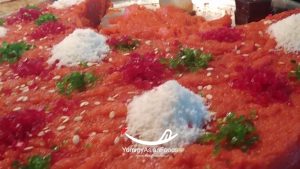
Step 3: Rolling out the parathas
With the dough rested and the fillings prepared, it’s time for the most exciting part: rolling out the parathas. This step requires a balance between maintaining thickness for a hearty bite and ensuring evenness for consistent cooking. As you carefully roll out each portion of dough into a circular shape, remember that practice makes perfect in achieving that ideal thinness without compromising on the integrity of the paratha.
Don’t be afraid to experiment with different techniques when rolling out your parathas. Some chefs swear by using gentle pressure with their palms, while others prefer using a rolling pin. Whichever method you choose, be sure to dust your work surface with flour to prevent sticking and ensure smooth maneuvering. Remember, each paratha is unique in its imperfections, adding character and homemade charm to your dish.
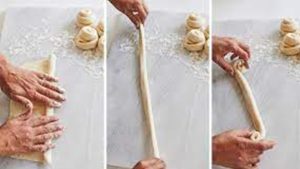
Step 4: Cooking and serving
Now it’s time for the grand finale: cooking and serving your delicious Pakistani Halwa Paratha! Heat a non-stick skillet over medium heat and add a teaspoon of ghee or oil. Place the rolled-out paratha on the skillet, cook until golden brown on both sides, then repeat with the remaining dough.
Once cooked, serve your hot and crispy Pakistani Halwa Parathas with a dollop of butter or ghee and a generous drizzle of honey or syrup. The combination of warm, flaky paratha with sweet halwa filling is pure bliss for your taste buds. Add some crushed pistachios or almonds on top for an extra crunch and visual appeal. Enjoy this delightful fusion dish as a special treat for breakfast or as a unique dessert that will leave everyone craving for more.
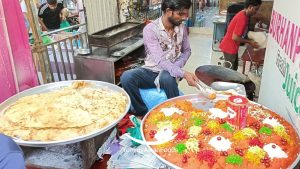
Serving Suggestions: Best Accompaniments for Pakistani Halwa Paratha
When it comes to serving Pakistani Halwa Paratha, the options are endless. One classic choice is to pair this sweet and savory dish with a cooling yogurt raita. The tanginess of the raita complements the richness of the halwa perfectly, creating a balanced flavor profile.
For those looking for a more indulgent option, serving Pakistani Halwa Paratha with a dollop of freshly whipped cream can elevate the dish to a whole new level of decadence. The light and airy texture of the cream contrasts beautifully with the dense and flavorful paratha, creating a delightful sensory experience that will leave your taste buds dancing with joy.
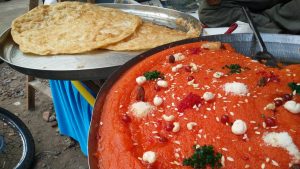
The Difference Between Indian and Pakistani Halwa Paratha
When it comes to Halwa Paratha, a popular dish in both Indian and Pakistani cuisine, there are subtle yet distinct differences that set apart the versions from each country. The Indian Halwa Paratha typically reflects a sweeter taste profile with the filling comprising of a rich mix of semolina, sugar, ghee, and nuts. In contrast, Pakistani Halwa Paratha leans towards a more savory flavor profile, incorporating ingredients like whole wheat flour, salt, cumin seeds, and sometimes minced meat or vegetables.
One notable distinction lies in the preparation method: while Indian Halwa Paratha is usually cooked on a griddle with ghee until golden brown and crispy on the outside, Pakistani Halwa Paratha tends to be folded differently in layers before being cooked which gives it a unique texture when bitten into. Despite these variations, both versions offer an indulgent experience that combines the best of sweet and savory elements within one delightful package that can be enjoyed at any time of day.
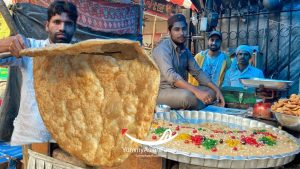
Brief History of Halwa Paratha
Halwa paratha, a popular Pakistani delicacy, has a fascinating history dating back to the Mughal era. Legends have it that this unique dish was invented by royal chefs who sought to create a luxurious and indulgent treat fit for the emperors. Combining the rich flavors of halwa, a sweet pudding made from semolina or carrots, with the buttery goodness of paratha, a flaky flatbread, resulted in the creation of Halwa Paratha—a dish that continues to delight taste buds across Pakistan.
Over the years, Pakistani Halwa Paratha has evolved from being an exclusive palace dish to becoming a beloved street food item and household favorite. Its ability to strike the perfect balance between sweetness and savory richness has made it an iconic breakfast choice for many Pakistanis. The preparation and presentation of Pakistani Halwa Paratha have also seen various adaptations, with different regions adding their own unique twists to this delectable fusion dish.
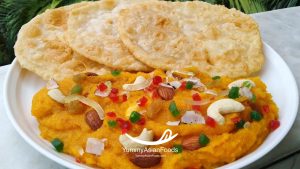
Concluding Thoughts: Enjoy Your Delicious Pakistani Halwa Paratha!
As you savor the warm, buttery layers of your freshly cooked Pakistani Halwa Paratha, take a moment to appreciate the rich fusion of flavors and textures that this dish embodies. The sweet and spiced halwa perfectly complements the flaky paratha, creating a culinary experience that is truly unforgettable. Each bite is a delightful journey through the vibrant streets of Pakistan, where food is not just sustenance but a celebration of culture and tradition.
In every mouthful of Halwa Paratha, you can taste the history and passion that goes into creating this beloved delicacy in Lahore or Karachi. It’s not just a meal; it’s an expression of love and connection with family and friends. So, as you relish each bite of your delicious creation, remember to enjoy every moment, savoring both the food in front of you and the memories it evokes. Pakistani Halwa Paratha isn’t just a dish; it’s an experience waiting to be cherished by all who partake in its indulgent delight.

